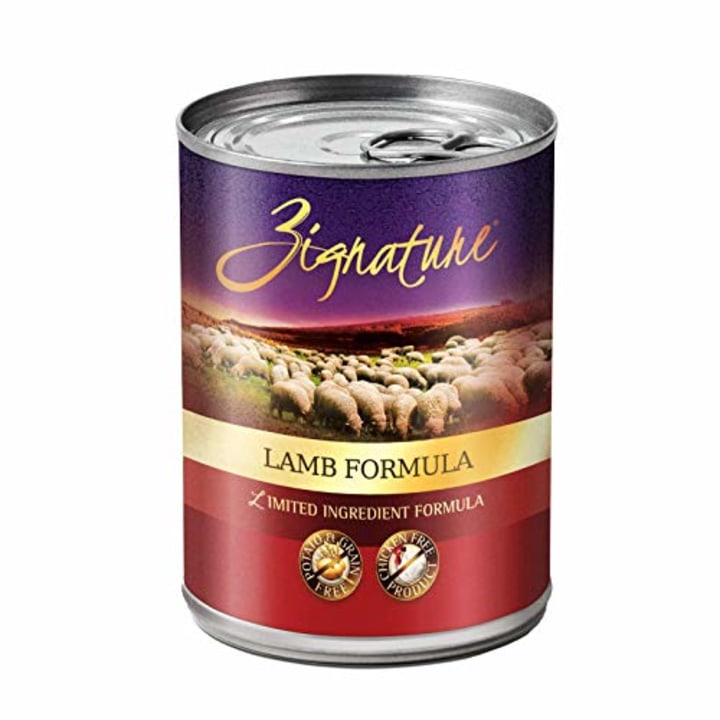Dogs provide humans with unconditional love and emotional support, which pet owners might be especially thankful for during the stressful times we are living through. Feeding your dog a nutritious diet is just one way to show them how much you care, in addition to providing them with the right dog bed, toys to play with and the occasional dog treat. Simply put, dogs deserve to eat well — in fact, “appropriate food” is fourth in the American Veterinary Medical Association’s Guidelines for Responsible Pet Ownership. And with Amazon Prime Day currently underway, you can find savings on many top-rated pet products.
SKIP AHEAD How to shop for dog food
Aiming for the best food for dogs gives them distinct health advantages, too, said Jennifer Freeman, DVM, resident veterinarian and pet care expert at PetSmart. “Premium dog food will include meat for protein, vitamin-packed vegetables and fruit, and omega fatty acids for a shiny coat,” Freeman said, adding “it’s also likely to have fewer fillers such as corn, wheat, and soy.”
Another tangible difference: The best dog food for your best friend can help lead to better absorption and digestion, producing dog poop that’s smaller and firmer, Freeman explained. (Any dog owner knows this is a huge win). The field of high quality, whole food (and often human-grade) options is growing, as is demand for it. According to the nonprofit American Pet Products Association, people will have spent upwards of $38 billion on food and treats for their pets in 2020 (up from $36.9 billion in 2019). But which dog food is best for your dog? To compile the best dog foods out now, we consulted experts on how to figure out which dog food is best and some of the best dog food options.
Which dog food is best? Here are some leading options
1. Taste of the Wild Ancient Prairie
They’ve revamped their formula to include ancient grains like sorghum and millet, but the first two ingredients are buffalo and pork to pack in protein.
2. Instinct RawBoost Mixers
If you feed your dog dry food, Morgan recommended adding a topper to expand the range of nutrients you’re feeding them. You can do this at home by adding a cooked egg, canned sardines in water, sautéed dark leafy greens, blueberries or pumpkin, as a few examples. You can also purchase freeze-dried raw “topper,” which are pieces of traditional and organ meats that you mix in with their kibble, like this one from Instinct.
3. Orijen Original Dry Dog Food
The company says that 85 percent of the ingredients within are animal-based (the remainder is fruits and veggies). In their original formula, you’ll find fresh chicken and turkey meat, and cage-free eggs as the first three ingredients, followed by organ meats and fish.
4. Organix Chicken & Oatmeal Dry Dog Food
In Organix, organic chicken is the first ingredient, along with oats and barley for whole grains and flaxseed and coconut oil for a healthier fat.
5. Zignature Lamb Limited Ingredient Canned Dog Food
This wet canned food features lamb as the first ingredient, along with chickpeas, flax and sunflower oil.
6. Freshpet Fresh From the Kitchen
You’ll find chicken listed as the first ingredient. Considering you can see the different foods within — like cranberries and carrots — you can feel good that your dog’s getting a meal full of the good stuff.
7. The Farmer’s Dog
There are several subscription home delivery services, like The Farmer’s Dog. “I call these TV dinners for dogs,” said Judy Morgan, DVM, a veterinarian who specializes in integrative care. These companies regularly send bags of fresh, human-grade food designed especially for your dog’s needs to your door. If you are on a budget and have a large dog, this might not be a cost-effective option for you, but it may be more doable for owners of smaller dogs, she said.

8. Only Natural Pet MaxMeat Air Dried Dog Food
Made with air-dried meat, the lamb and cod formula can be used as a meal or a topper to kibble to up the protein and add variety to your dog’s dish. The company uses free-range and pasture-raised New Zealand lamb. (Your dog deserves it, right?) This one is grain- and legume-free.
9. Rachael Ray Nutrish Supermedleys
A newcomer to the dog food space, this dry food features beef as the first ingredient, along with a bevy of fruits and veggies like pumpkin, blueberries, spinach and carrots.
How to shop for the best food for dogs
One of the most important steps in figuring out the best dog food is through the ingredient list, said Freeman, noting the first three are the most critical. “This will help you determine if the formula is vegetable-based with things like corn and rice or meat-based with chicken, fish, or lamb,” said Freeman. While each dog is differ
ent, they generally do best on a protein-rich, meat-based diet, she added.
Next, analyze what type of meat is within. “Look for brands that specifically name the type of meat, like beef, chicken, or lamb,” said Morgan. She noted that meat, bone meal or meat byproducts could come from any animal. Similarly, “poultry meal” signals any bird, she said.
The ingredients will also highlight some of what you want to avoid. Freeman suggested avoiding dog food that includes: dyes (dogs do not care what color their food is, she points out), sugar and high salt (which could be used as preservatives), as well as other solvents and preservatives like propylene glycol, BHA, BHT and ethoxyquin.
Types of dog food to consider
The field of dog food is wide and so are your options. You’ve got wet dog food and dry dog food, refrigerated food and fresh subscription-based options.
Organic dog food
While buzzwords like “natural” aren’t regulated, noted Freeman, there are some solid takeaways you get with an “organic” label. With that tag, your dog food is certified to be free of antibiotics, synthetic hormones, toxic pesticides and preservatives. And per the certification, its ingredients can’t be genetically engineered, grown in chemical fertilizer or irradiated.
Dry dog food versus wet or canned dog food
Freeman argued the amount of water in wet food might make it an unwise investment, and instead recommended you go with dry food. One benefit to dry food (or kibble), she noted, is that the friction of chewing it can help keep your dog’s teeth and gums healthy. It’s also less messy. Morgan added that bags of dry food also tend to be more affordable compared to the other options.
However, Morgan noted that kibble typically includes less meat and often includes some sort of grain, legume, or potato. If you go with kibble, Morgan suggested topping the dry food with a bit of canned food, meat from home, or other toppers.
Is grain-free dog food better?
Grain-free formulas have risen in popularity, but there’s recently been worry over them: The FDA opened an investigation in 2018 to examine a potential link between grain-free diets and a heart condition called canine dilated cardiomyopathy. Existing research is based on a small sample size, may be breed-specific and there may be other factors involved, said Morgan: “Overall, there needs to be more research done, and unfortunately this has affected many good-quality dog foods.” Consider speaking to your vet about your dog’s unique nutritional needs before making the leap to grain-free dog food.
While ingredients are important, what you really want to determine is whether the food contains the nutrients your dog needs to be healthy, not necessarily if it does or does not contain grains, some experts argue. To ensure you’re buying high-quality food, look for the nutrition adequacy statement. You should be able to find the statement — which the FDA considers “one of the most important aspects of a dog or cat food label” — on the back label (in small font). Finding it may require a bit of sleuthing first but it will provide many helpful details about the dog food, including profile information on the type and age of dogs it’s best for.














